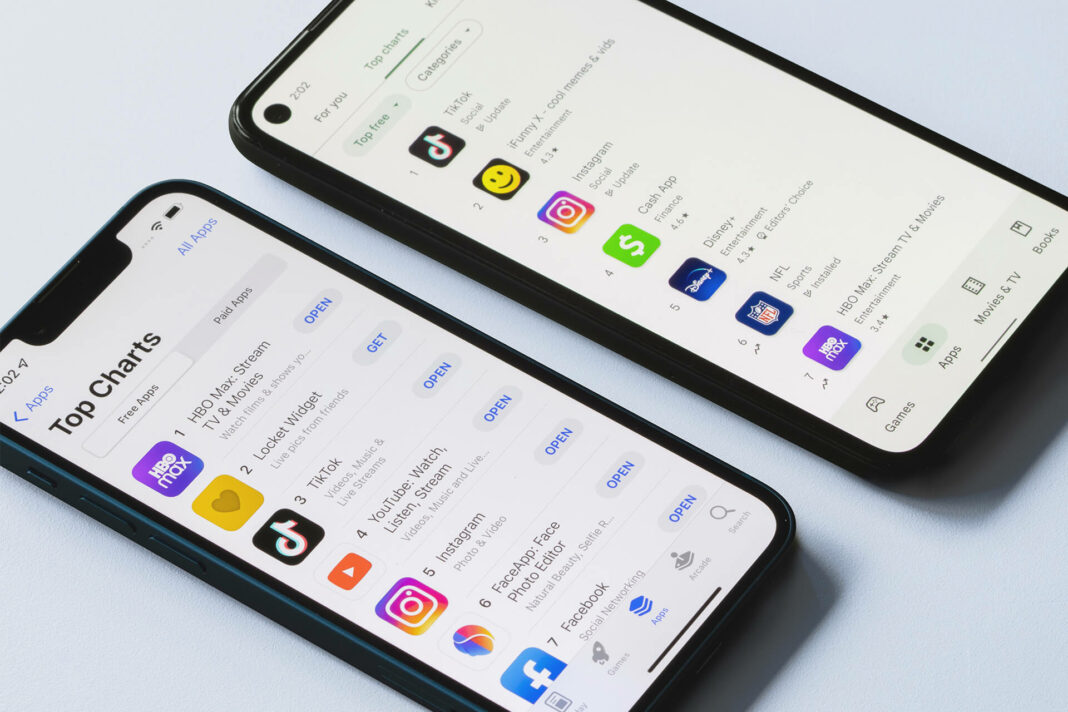They are the least interested in the technology used to produce these apps now that the majority of people on the planet have access to smartphones and mobile apps. More than anything else, they are concentrating on how the application will enhance their life.
The app’s desired feature set, scope, and timetable dictate whether native vs cross-platform app development should be used.
Native app development refers to developing a mobile application expressly for an operating system, such as iOS or Android. Native apps are developed using platform-specific approaches and programming languages.
Because they are designed particularly for the operating system, native apps have more user engagement than hybrid apps. Native mobile apps often operate and look better than their web-based competitors, which must support several platforms.
Native application development is more difficult than mobile web page development. Native mobile apps do not work in browsers. They must be obtained via platform-specific app stores such as Google Play and the Apple App Store.
Furthermore, there are a number of other native app development characteristics that typically make these the first choice when developing a mobile app. A huge number of smartphone applications, such as Whatsapp, Spotify, and Pokemon Go, are native apps.
Native apps are fast and responsive because they are built with the platform’s core programming language and APIs and are optimized for that platform.
Native apps perform better than cross-platform or hybrid alternatives. owing primarily to the lack of middleware and the application’s direct interface with native APIs
Native mobile apps are developed primarily on a single platform, allowing them to operate faster. The less densely loaded an application is, the faster it runs. It can only be run and compiled using specified programming languages and architectures. The app’s processing, loading, and runtime are faster on the smartphone.
Because your program is nothing without a simple and entertaining UI/UX, don’t expect too much from it. However, there are special principles for iOS and Android that can help you create a user-friendly design that eventually provides a more substantial user experience.
User experience is an important factor in attracting and retaining users in today’s mobile applications.
When native programming methods are employed, it is easier to create an effective and platform-specific user interface.
Cross-platform mobile development allows you to create a single mobile application that works well across multiple operating systems. Cross-platform application development is becoming increasingly common.
Startups can save money and time by employing it because it can run on a number of mobile devices. Developers may create and publish mobile assets that work on both Android and iOS without having to capture them separately for each platform.
It suggests that the company can release the goods faster and with higher quality.
The application can reach a wider audience because it is compatible with many mobile operating systems.
A cross-platform application can often be created more quickly and released to a bigger user base. On the other hand, it can be ineffective if the various systems it is intended to support require redundant processes or file storage locations. Famous cross-platform applications include VLC, Firefox, and Chrome.
Cross-platform programming allows mobile engineers to avoid writing new code for each operating system. Writing a single codebase for both platforms makes life much simpler for developers.
When creating something like a form component, a developer will take into account both the existing code base and any planned features.
Even after a mobile app is published in app stores, developers can still make adjustments and updates to it.
Cross-platform developers are advantageous because native app development is effective for developing an application on a certain platform, thus you might need to hire more developers for numerous tasks.
Cross-platform mobile development is a time- and money-saving alternative when an app needs to be deployed quickly and additional costs need to be avoided.
With cross-platform development, you can create apps for both platforms at once utilizing the same codebase and simpler APIs.
Whether the activity was outsourced or carried out internally, developers take less time to write the code. By developing cross-platform apps that function on various platforms, you might fast half their development costs.
You create a native app for users of iOS or Android. However, you can concentrate on both of these target areas if you create a cross-platform app.
If you release your software on both of these platforms, you can profit from it in two separate ways. We can create apps and extend them across all platforms by developing the cross-platform concept.
A cross-platform application may help you access a broader audience, ultimately boosting brand engagement, strengthening your position in the market, and boosting your earnings.
The best option for great visuals and an immersive experience is native development. When working in a native environment, developers can make use of UI and UX components. The software’s UI/UX will be significantly hampered if you choose cross-platform.
While native apps allow developers access to a huge number of UI/UX components, cross-platform apps have fewer options, which limits their capacity to create stunning visuals and improve usability.
Since it is challenging to create a single codebase that would give outstanding UX across a number of devices, cross-platform apps’ user experiences (UX) can be less appealing. As a result, its look and feel might not be quite as impressive as that of native apps.
Cross-platform apps are less expensive since they employ a single source code that is subsequently updated for a specific OS, whereas native apps require entirely different code for the Android and iOS platforms.
A native app requires more workers, which increases employment costs. If money is scarce, cross-platform software might be your best option.
The app’s efficiency and speed are essential factors in determining its destiny. Native apps take care of any performance or speed issues that the IT business owner might have.
Cross-platform apps, on the other hand, require an extra rendering layer in order to work on both iOS and Android, which could slow them down and affect their overall pace.




















